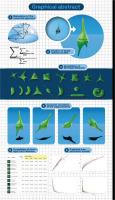当前位置:
X-MOL 学术
›
Water Res.
›
论文详情
Our official English website, www.x-mol.net, welcomes your
feedback! (Note: you will need to create a separate account there.)
Projected area calculation for microalgae using three-dimensional models
Water Research ( IF 11.4 ) Pub Date : 2025-06-03 , DOI: 10.1016/j.watres.2025.123951
Borics Gábor, Verona Lerf, János Falucskai, Viktória B-Béres, Tibor Kisantal, István Tóth, Enikő T-Krasznai, Igor Stanković, Judit Görgényi, Áron Lukács, Gábor Várbíró
Water Research ( IF 11.4 ) Pub Date : 2025-06-03 , DOI: 10.1016/j.watres.2025.123951
Borics Gábor, Verona Lerf, János Falucskai, Viktória B-Béres, Tibor Kisantal, István Tóth, Enikő T-Krasznai, Igor Stanković, Judit Görgényi, Áron Lukács, Gábor Várbíró

|
Light acquisition and sinking properties of microalgae fundamentally affect how species perform in aquatic environments. Both properties are the function of their projected area (Ā), a crucial morphological trait of microalgae. Despite their importance, species-specific Ā values have not been computed for microalgae. The reason for this is that although using an analytical approach Ā can be calculated for every convex shape, a vast majority of planktic algae are concave and currently not known how to calculate the projected area of concave shapes.Applying shape-realistic 3D models of microalgae and a novel numerical approach combined with computer simulation, we calculated the projected area for more than 800 microalgae.Validating this approach using convex shapes and the analytical Ā = surface area/4 formula we found, that the proposed method achieves less than 5% estimation bias.We also studied how Ā values of species can be predicted by easy-to-measure morphological metrics (such as Gald/width ratio, compactness, relative surface area extension, relative elongation, surface area constant, volume constant). We have found that the metrics do not show a sufficiently close relationship with the projected area to allow us to estimate species-specific Ā values.We demonstrated that the morphological differences among species can result in up to 6-fold differences in Ā values for the same volume. Spindle-form, filamentous species and loosely packed coenobia are the most efficient adaptations to maximize Ā.This study provides an innovative methodology and a huge dataset containing Ā values of 844 planktic freshwater microalgae. Although the dataset contains species only for the Pannonian and Dinaric ecoregions, because of the cosmopolitan nature of planktic algae it can be used for other ecoregions.Species-specific projected area values multiplied by cell counts give a new metric that characterizes the shading property of the given phytoplankton assemblage and enables us to better understand the changes in light availability and study the vertical processes in the water.
中文翻译:

使用三维模型计算微藻的投影面积
微藻的光捕获和下沉特性从根本上影响物种在水生环境中的表现。这两种特性都是其投影面积 (Ā) 的函数,这是微藻的关键形态特征。尽管它们很重要,但尚未计算微藻的物种特异性 Ā 值。这样做的原因是,虽然使用分析方法可以计算每个凸形的 Ā,但绝大多数浮游藻类都是凹形的,目前不知道如何计算凹形的投影面积。应用微藻的形状逼真 3D 模型和新颖的数值方法与计算机模拟相结合,我们计算了 800 多个微藻的投影面积。使用凸形和我们发现的解析 Ā = 表面积/4 公式验证这种方法,所提出的方法实现了小于 5% 的估计偏差。我们还研究了如何通过易于测量的形态指标(例如 Gald/宽度比、紧凑度、相对表面积延伸、相对伸长率、表面积常数、体积常数)来预测物种的 Ā 值。我们发现,这些指标与投影区域的关系不够密切,无法让我们估计物种特异性的 Ā 值。我们证明,物种之间的形态差异可导致相同体积的 Ā 值差异高达 6 倍。纺锤形、丝状物种和松散堆积的 coenobia 是最大化 Ā 的最有效适应.本研究提供了一种创新的方法和一个包含 844 种浮游淡水微藻的 Ā 值的巨大数据集。 尽管数据集仅包含潘诺尼亚和迪纳里克生态区的物种,但由于浮游藻类的世界性,它可以用于其他生态区。物种特异性投影面积值乘以细胞计数给出了一个新的指标,该指标表征了给定浮游植物组合的阴影特性,并使我们能够更好地了解光可用性的变化并研究水中的垂直过程。
更新日期:2025-06-03
中文翻译:

使用三维模型计算微藻的投影面积
微藻的光捕获和下沉特性从根本上影响物种在水生环境中的表现。这两种特性都是其投影面积 (Ā) 的函数,这是微藻的关键形态特征。尽管它们很重要,但尚未计算微藻的物种特异性 Ā 值。这样做的原因是,虽然使用分析方法可以计算每个凸形的 Ā,但绝大多数浮游藻类都是凹形的,目前不知道如何计算凹形的投影面积。应用微藻的形状逼真 3D 模型和新颖的数值方法与计算机模拟相结合,我们计算了 800 多个微藻的投影面积。使用凸形和我们发现的解析 Ā = 表面积/4 公式验证这种方法,所提出的方法实现了小于 5% 的估计偏差。我们还研究了如何通过易于测量的形态指标(例如 Gald/宽度比、紧凑度、相对表面积延伸、相对伸长率、表面积常数、体积常数)来预测物种的 Ā 值。我们发现,这些指标与投影区域的关系不够密切,无法让我们估计物种特异性的 Ā 值。我们证明,物种之间的形态差异可导致相同体积的 Ā 值差异高达 6 倍。纺锤形、丝状物种和松散堆积的 coenobia 是最大化 Ā 的最有效适应.本研究提供了一种创新的方法和一个包含 844 种浮游淡水微藻的 Ā 值的巨大数据集。 尽管数据集仅包含潘诺尼亚和迪纳里克生态区的物种,但由于浮游藻类的世界性,它可以用于其他生态区。物种特异性投影面积值乘以细胞计数给出了一个新的指标,该指标表征了给定浮游植物组合的阴影特性,并使我们能够更好地了解光可用性的变化并研究水中的垂直过程。


















































 京公网安备 11010802027423号
京公网安备 11010802027423号